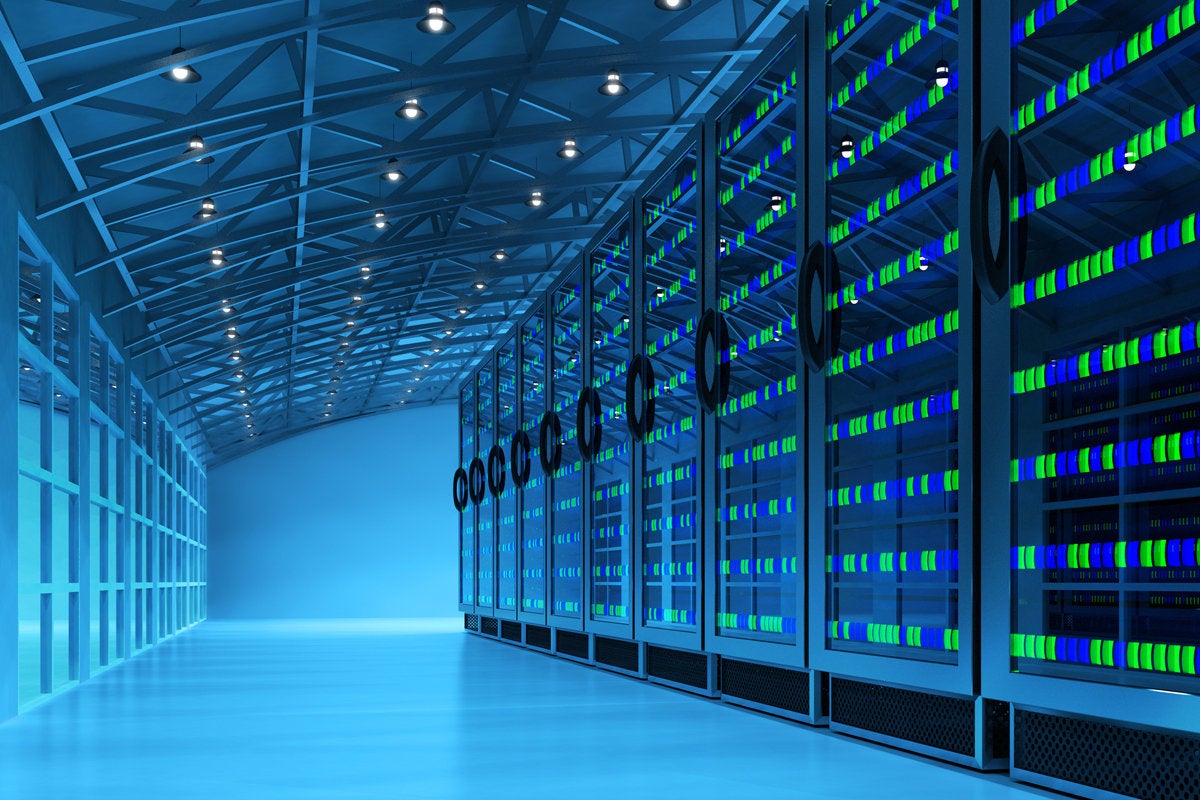The future of computer security is machine vs machine
Because so much of our computing infrastructure will be protected and controlled by well-informed, cloud-based decision makers, the malware and hackers of the future will be forced to fight the centralized services first and foremost if they ever hope to spread. They will probably subscribe to these same services and look for holes, or subscribe to a malicious service that belongs to multiple services and looks for and sells weaknesses, much like some services do today fighting the accuracy of VirusTotal. This is where the future defense and attack scenarios start looking very machine versus machine. Our future defenses will be more centralized, coordinated, and automated. The hackers will have to do the same thing to stay ahead. If they don’t automate as much as or more than the defensive services do, they won’t be able to do as much badness. Hackers and malware will turn to automation and AI just as much as the defenders. When the defenders block the malicious thing that was being successful a few minutes ago, the malicious automated service will have to quickly respond. Whomever’s AI is better will ultimately win.
Empowering Citizen Data Scientists to Solve the AI Skills Shortage

Citizen data scientists are analysts with above average skills but without a formal academic background in data science, explained Ashley Kramer, vice president of Product Management at Alteryx, "I see the citizen data scientists as this emerging group," she said in an interview. "They don't have a degree in data science but they're more advanced than your average analyst. They are people with advanced capabilities like writing scripts within Excel. They are starting to get to that next level of being able to create predictive analytics. They need a little bit of help because they're not programmers." This is the group of what in an earlier era were called power users. Alteryx is designed to help them. "With the data scientist shortage," Kramer said, "we provide a platform that can be used by citizen data scientists in a code-free way, which is really important as they're learning the process." Alteryx offers a "code-friendly" way for budding data scientists to begin creating machine learning models for business requirements such as predicting and preventing equipment failures.
How complexity, multicloud sprawl, and need for maturity hinder hybrid IT

To some degree, we’ve already hit that inflection point where technology is being used in inappropriate ways. A great example of this—and it’s something that just kind of raises the hair on the back of my neck—is when I hear that boards of directors of publicly traded companies are giving mandates to their organization to “go cloud.” The board should be very business-focused and instead they're dictating specific technology, whether it’s the right technology or not. That’s really what this comes down to. Another example is folks that try and go all in on cloud but aren’t necessarily thinking about what’s the right use of cloud—in all forms: public, private, software as a service (SaaS). What’s the right combination to use for any given application? It’s not a one-size-fits-all answer. We in the enterprise IT space haven't really done enough work to truly understand how best to leverage these new sets of tools. We need to both wrap our head around it but also get in the right frame of mind and thought process around how to take advantage of them in the best way possible.
Enhancing digital infrastructure: Why it matters & the best strategies for your business
Change can be unsettling, and workers can understandably be apprehensive about any differences in role, focus or tasks, especially if it involves a technology element they don’t necessarily understand. For example; if moving to the ‘cloud’ you can’t just ‘buy cloud’ and hope everyone catches on to the concept overnight. No person or training course can transform single-handedly. There’s also a whole range of concepts to become familiar with for teams to work at the speed that cloud can enable. Focus on the move to ‘becoming cloud’ – a gradual process of change – which will transform the culture in a structured and less intimidating way. Help your staff by providing as much clarity as you can; translate top-line goals and priorities into specific metrics and KPIs for employees at all levels. Allow them time and space to experiment with new technology and let them know it’s ok to get things wrong! Encourage users to communicate and feedback so the right support is identified.
The evolution of systems requires an evolution of systems engineers

New frameworks, architectures, processes, and a thriving ecosystem of tools have emerged to help us meet those challenges. Some of these are in an embryonic state, but rapid adoption is driving quick maturity. We’ve seen this evolution in compute: it’s only been four years since containers became a mainstream technology, and we are now working with complex application-level abstractions enabled by tools like Kubernetes. A similar evolution is occuring with deployment, serverless, edge-computing technology, security, performance, and system observability. Finally, no changes can exist in a human and organizational vacuum. We have to develop the leadership skills necessary to build truly cross-functional teams and enable that rapid iteration needed to build these systems. We have to continue the work of the DevOps and SRE communities to break down silos and streamline transitions between teams and increase development velocity.
Surprisingly, These 10 Professional Jobs Are Under Threat From Big Data

When you read or hear news stories about the imminent takeover of robots and algorithms that will eliminate jobs for human workers, many times the first examples given are blue-collar jobs like factory workers and taxi drivers. And you may have mentally congratulated yourself because your “professional” job is safe from the threat of being outsourced to computers. But don’t feel so safe just yet. More and more, sophisticated algorithms and machine learning are proving that jobs previously thought to be the sole purview of humans can be done — as well or better — by machines. Boston Consulting Group has predicted that by 2025 as much as a quarter of jobs currently available will be replaced by either smart software or robots. A study out of Oxford University also suggested that as much as 35 percent of existing jobs in the U.K. could be at risk of automation inside the next 20 years.
IBM Watson Data Kits speed enterprise AI development

More than half of data scientists said they spend most of their time on janitorial tasks, such as cleaning and organizing data, labeling data, and collecting data sets, according to a CrowdFlower report, making it difficult for business leaders to implement AI technology at scale. Streamlining and accelerating the development process for AI engineers and data scientists will help companies more quickly gain insights from their data, and drive greater business value, according to IBM. "Big data is fueling the cognitive era. However, businesses need the right data to truly drive innovation," Kristen Lauria, general manager of Watson media and content, said in the release. "IBM Watson Data Kits can help bridge that gap by providing the machine-readable, pre-trained data companies require to accelerate AI development and lead to a faster time to insight and value. Data is hard, but Watson can make it easier for stakeholders at every level, from CIOs to data scientists."
An Incredible New Type of Brain Implant Can Boost Memory by 15%

By fine tuning the electrical activity of the probes, the scientists aimed to activate key components of the brain's memory network only when it struggled to store memories, but not when it was working fine. The basic concept itself of boosting memorisation and recall through neural stimulation is old ground. Neuroscientists have gradually progressed from using non-invasive Transcranial Magnetic Stimulation techniques to deep brain stimulation in an effort to tickle the right pathways and encourage the brain to store and reconnect with memories. While there have been encouraging successes by precisely targeting areas such as the hippocampus and medial temporal lobes, the results haven't always been consistent. Part of the problem could be the choice of location, but another issue could be the method. Past efforts have used what's called an open loop system, meaning the stimulation wasn't tweaked in response to the brain's activity.
Hyperconverged infrastructure gets its own Gartner magic quadrant

Hyperconvergence is an IT framework that combines storage, virtualized computing and networking into a single system to reduce data center complexity and increase scalability. Hyperconverged platforms include a hypervisor for virtualized computing, software-defined storage, and virtualized networking. The promise of hyperconverged infrastructure is simplicity and flexibility compared with legacy solutions. The integrated storage systems, servers and networking switches are designed to be managed as a single system, across all instances of a hyperconverged infrastructure. As hyperconvergence has caught on among enterprises, major system vendors have gotten into the action by acquiring startups or bunding their servers with HCI software through OEM arrangements. Gartner’s new magic quadrant specifically focuses on vendors that develop the core hyperconvergence software. The new magic quadrant drops the system hardware requirement that’s part of the HCIS appliance model, Gartner says.
A.I. and speech advances bring virtual assistants to work

“It is that idea of ambient computing, the idea that at any time I could just say ‘Alexa start my meeting,’ ‘Alexa how are my sales figures?’ or ‘Alexa I forgot to shut off the projector in the conference room please shut that off for me.’ “It is very natural, it is very spontaneous,” Ibitski said. “And all of this is happening because of the advancements we have seen in what is called NLU, or natural language understanding. And that is the difference – it is understanding context.” Collin Davis, general manager of Alexa for Business, said virtual assistants are already helping employees get work done. “What we are finding is a really interesting shift is happening, where voice is offering up almost another dimension of multi-tasking, where workers sitting at their desk can use Alexa almost as a vocal multi-taskerto be able to get information quickly without losing focus,” Davis said. “You could be working on a report and you need to know how many deals closed last quarter without having to reach into your pocket or find an app or switch websites – you just get the information that you need.”
Quote for the day:
"Leadership appears to be the art of getting others to want to do something you are convinced should be done." -- Vance Packard

No comments:
Post a Comment